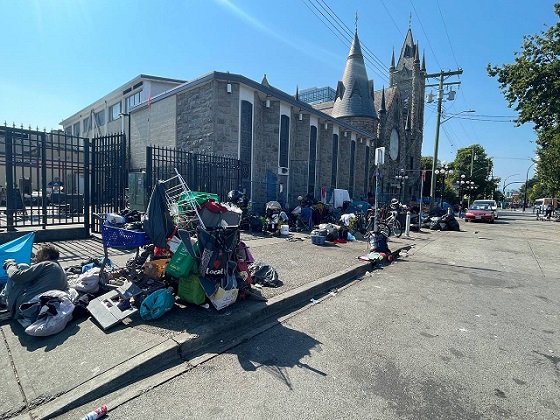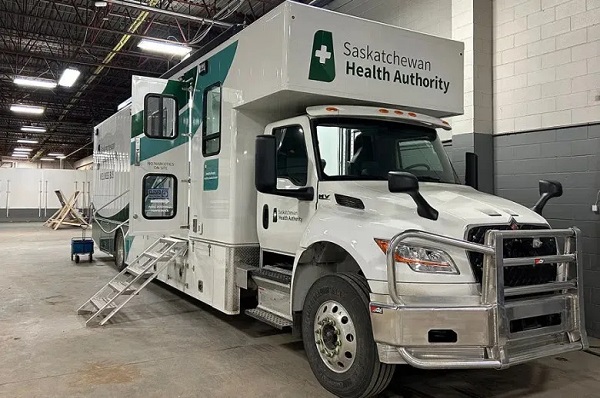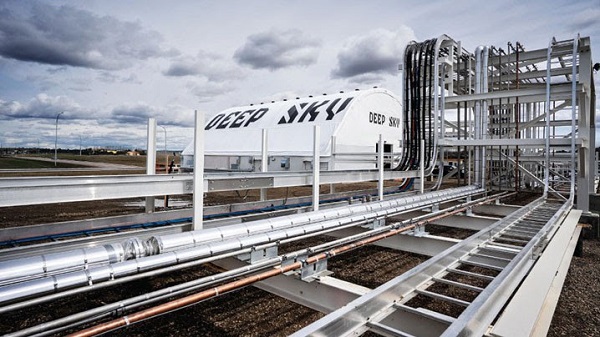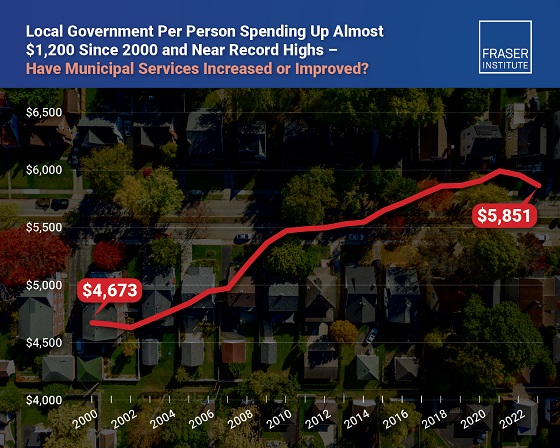Addictions
B.C. mayors voice discontent over province’s response to drug crisis

The street outside the Harbour Supervised Consumption Service in Victoria, B.C., on Sept. 6, 2024. (Photo credit: Alexandra Keeler)
By Alexandra Keeler
A number of B.C. mayors say the province’s drug decriminalization project has been a failure — and they are not confident involuntary care will address the problem
Many B.C. mayors are unhappy with the province’s handling of the drug crisis, saying it is failing their communities.
“I don’t think [the province’s] approach was very well thought out,” said Mayor Brad West of Port Coquitlam, a city of 61,000 that is a half-hour’s drive east of Vancouver.
“They announced, seemingly pretty quickly, that the province was going to pursue decriminalization, and there didn’t seem to be a lot of public discourse or consultation in the lead up to it,” he said.
“It was just kind of like, ‘Bam! Here it is.’”
West’s comments were echoed by other municipal leaders, who also say the province’s harm-reduction and treatment services are under-resourced, leaving them ill-equipped to help community members who are struggling.
‘Can’t do anything’
West says he and Port Coquitlam’s constituents observed an immediate increase in public drug use after the province launched a three-year, trial decriminalization project in January 2023.
The project initially enabled residents to use otherwise illicit drugs — such as fentanyl, heroin and cocaine — in most parts of the province, although it prohibited drug use on school premises or near child-care facilities.
Yet, West says drug use in parks and playgrounds was a major issue in his community.
“What [decriminalization] meant in a place like Port Coquitlam is that when you did have an incident that required a police response, none was forthcoming anymore,” he said. “[Police] would tell you, ‘Well, we can’t do anything. We’re not allowed to.’”
In June 2023, Port Coquitlam responded by passing a bylaw, introduced by West, that banned drug use in public spaces. Other B.C. municipalities — including Nelson, Kamloops and Campbell River — soon followed suit.
In December, B.C. tried to pass a law enabling police to remove people from public spaces if they were using drugs. But a B.C. court temporarily blocked it, citing risks to drug users.
The province then sought approval from Ottawa to re-criminalize public drug use, which it obtained this spring. Now, hard drug use is only permitted in private residences, legal shelters or harm-reduction clinics.
Subscribe for free to get BTN’s latest news and analysis, or donate to our journalism fund.
Wait times
West says he has also been frustrated with the province’s harm-reduction facilities, which he describes as “poorly staffed” and “under-resourced.” These facilities often fail to connect individuals to necessary resources or recovery programs, he says.
West has witnessed some of these problems up close. His stepbrother battled addiction and homelessness before finding recovery.
“The biggest barrier that I think he encountered — and most people encounter in terms of recovery — is the wait times,” he said.
The wait time to get into B.C.’s private addiction rehab centres is about three to seven days. But the cost — ranging from $10,000 to $30,000 a month — is out of reach for many.
By contrast, the wait time to get into government-funded programs is about three to six months.
In addition to advocating for more accessible recovery services, West emphasizes the need for stronger enforcement at docks, ports and borders to combat drug trafficking.
“Our ports of entry, our border, the port itself, are completely porous,” he said. “We have no dedicated port police — one of the few jurisdictions that doesn’t. And as a result, Metro Vancouver has become an epicentre for drug trafficking.”
In May 2023, he was the sole Canadian mayor invited by US Secretary of State Antony Blinken to discuss the issue with other mayors. “We have weak [drug] laws … This is why I think we’ve become a global hub for [drug trafficking],” he said.
Brain damage
The BC NDP and BC Conservatives have both recently pledged to introduce involuntary care, which would enable the province to admit people with addiction challenges, brain injuries and mental-health issues into treatment facilities without their consent.
Mayor Leonard Krog of Nanaimo, a coastal city of about 100,000 on the east side of Vancouver Island, has long advocated for involuntary care.
 |
Nanaimo Mayor Leonard Krog sits in his office at Nanaimo City Hall on Sept. 4, 2024. (Photo credit: Alexandra Keeler)
Krog notes that a significant segment of the homeless population has suffered brain damage, which can exacerbate efforts to help them. A 2020 report by Brain Injury Canada says about 50 per cent of people experiencing homelessness have some form of brain injury.
Krog does not believe people with brain injuries and addiction issues are likely to seek treatment on their own. “Those folks should be in secure, involuntary care,” he said.
But he is not optimistic that NDP’s involuntary care proposal will address the full scope of the issue.
“[I]n terms of numbers, my strong view is that it will not address the significant population who are currently in the streets.”
Stay alive
Victoria Mayor Marianne Alto believes in providing support to keep people alive until they seek recovery.
“My view of harm reduction is … I’ll give you anything you need to stay alive until you have that epiphany moment,” she said.
But she is concerned that the province has not adopted a comprehensive approach to tackling the drug crisis. The recent proposals to introduce involuntary care have not eased her concerns.
“Involuntary care can be a necessary tool in a complex system,” she said. “But its effectiveness hinges on clear standards. We must ensure that individuals receive not just initial intervention but also ongoing support to prevent their return to the circumstances that led them there.”
“The devil is in the details,” she said.
 |
Victoria Mayor Marianne Alto leans against a railing in downtown Victoria, B.C. , in May 2022. (Marianne Alto’s Facebook)
The B.C. capital has been pursuing additional strategies to tackle the city’s homelessness, addiction and mental health challenges.
For example, a local nonprofit has been working with individuals living in parks to connect them with housing and support. “It’s also very slow, because to be very successful, you have to do it one person at a time, one-on-one. But it’s working,” she said.
But other efforts have met resistance.
City council rejected a motion introduced by Alto that had proposed rewarding churches and cultural centres that offered overnight parking to vehicle-dwelling homeless people. Five council members opposed it, Alto says, citing fears about crime and concerns that the program overstepped their duties.
“There is a genuine fatigue in the public, which is being reflected in municipal councils, saying, ‘How much further, how much longer, how much more?’”
This article was produced through the Breaking Needles Fellowship Program, which provided a grant to Canadian Affairs, a digital media outlet, to fund journalism exploring addiction and crime in Canada. Articles produced through the Fellowship are co-published by Break The Needle and Canadian Affairs.
You’re currently a free subscriber to Break The Needle. Our content is always free – but if you want to help us commission more high-quality journalism, consider getting a voluntary paid subscription.
Addictions
New RCMP program steering opioid addicted towards treatment and recovery

News release from Alberta RCMP
Virtual Opioid Dependency Program serves vulnerable population in Red Deer
Since April 2024, your Alberta RCMP’s Community Safety and Well-being Branch (CSWB) has been piloting the Virtual Opioid Dependency Program (VODP) program in Red Deer to assist those facing opioid dependency with initial-stage intervention services. VODP is a collaboration with the Government of Alberta, Recovery Alberta, and the Alberta RCMP, and was created to help address opioid addiction across the province.
Red Deer’s VODP consists of two teams, each consisting of a police officer and a paramedic. These teams cover the communities of Red Deer, Innisfail, Blackfalds and Sylvan Lake. The goal of the program is to have frontline points of contact that can assist opioid users by getting them access to treatment, counselling, and life-saving medication.
The Alberta RCMP’s role in VODP:
- Conducting outreach in the community, on foot, by vehicle, and even UTV, and interacting with vulnerable persons and talking with them about treatment options and making VODP referrals.
- Attending calls for service in which opioid use may be a factor, such as drug poisonings, open drug use in public, social diversion calls, etc.
- Administering medication such as Suboxone and Sublocade to opioid users who are arrested and lodged in RCMP cells and voluntarily wish to participate in VODP; these medications help with withdrawal symptoms and are the primary method for treating opioid addiction. Individuals may be provided ongoing treatment while in police custody or incarceration.
- Collaborating with agencies in the treatment and addiction space to work together on client care. Red Deer’s VODP chairs a quarterly Vulnerable Populations Working Group meeting consisting of a number of local stakeholders who come together to address both client and community needs.
While accountability for criminal actions is necessary, the Alberta RCMP recognizes that opioid addiction is part of larger social and health issues that require long-term supports. Often people facing addictions are among offenders who land in a cycle of criminality. As first responders, our officers are frequently in contact with these individuals. We are ideally placed to help connect those individuals with the VODP. The Alberta RCMP helps those individuals who wish to participate in the VODP by ensuring that they have access to necessary resources and receive the medical care they need, even while they are in police custody.
Since its start, the Red Deer program has made nearly 2,500 referrals and touchpoints with individuals, discussing VODP participation and treatment options. Some successes of the program include:
- In October 2024, Red Deer VODP assessed a 35-year-old male who was arrested and in police custody. The individual was put in contact with medical care and was prescribed and administered Suboxone. The team members did not have any contact with the male again until April 2025 when the individual visited the detachment to thank the team for treating him with care and dignity while in cells, and for getting him access to treatment. The individual stated he had been sober since, saying the treatment saved his life.
- In May 2025, the VODP team worked with a 14-year-old female who was arrested on warrants and lodged in RCMP cells. She had run away from home and was located downtown using opioids. The team spoke to the girl about treatment, was referred to VODP, and was administered Sublocade to treat her addiction. During follow-up, the team received positive feedback from both the family and the attending care providers.
The VODP provides same-day medication starts, opioid treatment transition services, and ongoing opioid dependency care to people anywhere in Alberta who are living with opioid addiction. Visit vodp.ca to learn more.
“This collaboration between Alberta’s Government, Recovery Alberta and the RCMP is a powerful example of how partnerships between health and public safety can change lives. The Virtual Opioid Dependency Program can be the first step in a person’s journey to recovery,” says Alberta’s Minister of Mental Health and Addiction Rick Wilson. “By connecting people to treatment when and where they need it most, we are helping build more paths to recovery and to a healthier Alberta.”
“Part of the Alberta RCMP’s CSWB mandate is the enhancement of public safety through community partnerships,” says Supt. Holly Glassford, Detachment Commander of Red Deer RCMP. “Through VODP, we are committed to building upon community partnerships with social and health agencies, so that we can increase accessibility to supports in our city and reduce crime in Red Deer. Together we are creating a stronger, safer Alberta.”
Addictions
Saskatchewan launches small fleet of wellness buses to expand addictions care

By Alexandra Keeler
Across Canada, mobile health models are increasingly being used to offer care to rural and underserved communities
Saskatchewan has launched a small fleet of mobile wellness buses to improve access to primary health care, mental health and addiction services in the province.
The first bus began operating in Regina on Feb. 12. Another followed in Prince Albert on March 21. Saskatoon’s bus was unveiled publicly on April 9. All three are former coach buses that have been retrofitted to provide health care to communities facing barriers to access.
“Mobile health units are proven to improve outcomes for people facing barriers to healthcare,” Kayla DeMong, the executive director of addiction treatment centre Prairie Harm Reduction, told Canadian Affairs in an email.
“We fully support this innovative approach and are excited to work alongside the health bus teams to ensure the people we support receive the care they need, when and where they need it.”
Wellness buses
Like all provinces, Saskatchewan has been grappling with the opioid crisis.
In 2023, an estimated 457 individuals died from overdoses in the province. In 2024, that number fell to 346. But the province continues to struggle with fatal and non-fatal overdoses.
In late February, Saskatoon firefighters responded to more than 25 overdoses in a single 24-hour period. Just over a week later, they responded to 37 overdoses within another 24-hour window.
Saskatchewan’s wellness buses are part of the province’s plan to address these problems. In April 2025, the province announced $2.4 million to purchase and retrofit three coach buses, plus $1.5 million in annual operating funds.
The buses operate on fixed schedules at designated locations around each city. Each bus is staffed with a nurse practitioner, nurse and assessor coordinator who offer services such as overdose reversal kits, addiction medicine and mental health referrals.
“By bringing services directly to where people are, the health buses foster safer, more welcoming spaces and help build trusting relationships between community members and care providers,” said DeMong, executive director of Prairie Harm Reduction.
Saskatoon-based Prairie Harm Reduction is one of the local organizations that partners with the buses to provide additional support services. Prairie Harm Reduction provides a range of family, youth and community supports, and also houses the province’s only fixed supervised consumption site.
The mobile model
Saskatchewan is not the only province using wellness buses. Across Canada, mobile health models are increasingly being used to expand access to care in rural and underserved communities.
In Kingston, Ont., the Street Health Centre operates a retrofitted RV called PORCH (Portable Outreach Care Hub) that serves individuals struggling with homelessness and addiction.
“Our outreach services are extremely popular with our clients and community partners,” Donna Glasspoole, manager at Street Health Centre, said in an emailed statement.
“PORCH hits the road two to three days/week and offers a variety of services, which are dependent on the health care providers and community partners aboard.”
Street Health Centre also has a shuttle service that picks up clients in shelters and brings them to medical clinics or addiction medicine clinics.
The PORCH vehicles are not supported by provincial funding, but instead rely on support from the United Way and other grants. Glasspoole says the centre’s permanent location — which does receive government funding — is more cost-effective to operate.
“The vehicles are expensive to operate and our RV is not great in winter months and requires indoor parking,” she said.

Politically palatable
Many mobile health models currently do not provide controversial services such as supervised drug consumption.
The Saskatchewan Health Authority told Canadian Affairs the province’s new wellness buses will not offer supervised consumption services or safer supply, where drug users are given prescribed opioids as an alternative to toxic street drugs.
“There are no plans to provide supervised consumption services from the wellness buses,” Saskatchewan Health Authority spokesperson Courtney Markewich told Canadian Affairs in a phone call.
This limited scope may make mobile services more politically palatable in provinces that have resisted harm reduction measures.
In Ontario, some harm reduction programs have shifted to mobile models following Premier Doug Ford’s decision to suspend supervised consumption services located within 200 metres of schools and daycares.
In April, Toronto Public Health ended operations at its Victoria Street fixed consumption site, replacing it with street outreach and mobile vans.
The Ontario government’s decision to close the sites is part of a broader pivot away from harm reduction. The province is investing $378 million to transition suspended sites into 19 new “HART Hubs” that offer primary care, mental health, addictions treatment and other supports.
Glasspoole says that what matters most is not whether services are provided at fixed or mobile locations, but how care is delivered.
Models that “reduce barriers to care, [are] non-judgemental, and [are staffed by] trauma-informed providers” are what lead more people toward treatment and recovery, she said in her email.
In Saskatchewan, DeMong hopes the province’s new wellness buses help address persistent service gaps and build trust with underserved communities.
“This initiative is a vital step toward filling long-standing gaps in the continuum of care by providing low-barrier, community-based access to health-care services,” she said.
This article was produced through the Breaking Needles Fellowship Program, which provided a grant to Canadian Affairs, a digital media outlet, to fund journalism exploring addiction and crime in Canada. Articles produced through the Fellowship are co-published by Break The Needle and Canadian Affairs.
Subscribe to Break The Needle
-

 Business2 days ago
Business2 days agoOttawa Funded the China Ferry Deal—Then Pretended to Oppose It
-

 COVID-192 days ago
COVID-192 days agoNew Peer-Reviewed Study Affirms COVID Vaccines Reduce Fertility
-

 MAiD2 days ago
MAiD2 days agoCanada’s euthanasia regime is not health care, but a death machine for the unwanted
-

 Business1 day ago
Business1 day agoWorld Economic Forum Aims to Repair Relations with Schwab
-

 Alberta2 days ago
Alberta2 days agoThe permanent CO2 storage site at the end of the Alberta Carbon Trunk Line is just getting started
-

 Alberta2 days ago
Alberta2 days agoAlberta’s government is investing $5 million to help launch the world’s first direct air capture centre at Innisfail
-

 Business2 days ago
Business2 days agoMunicipal government per-person spending in Canada hit near record levels
-

 Business1 day ago
Business1 day agoA new federal bureaucracy will not deliver the affordable housing Canadians need







